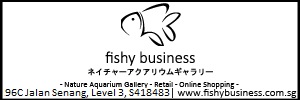First off, the eggs must be fully mature, as in fully developed (eyes of the embryos clearly seen with a torchlight) before wetting the peat containing the eggs. Most of the fry ought to hatch within the first 8 hours or so post-wetting. With the stragglers out within the following 24 hours post-wetting. There are some eggs which will not develop until much later, so the peat should be re-dried and stored properly to be wet again in a week or two.
It is good to hope but also be prepared for any unfortunate circumstances. As with most things, Mother Nature can be unpredictable. If the eggs were not stored properly, there is a high chance none of them survived during incubation.
Some eggs have been known to survive in the peat for 1-2 years and sometimes longer, but this is dependent on the species. The diet for N. rachovii is fairly simple. At birth the fry are quite small so giving them infusions of green water or infusoria for the first 2-3 days should help. Their raising tank should be properly cycled and have some mosses in it or just algae growth. They will take microworms soon after the 3rd day or so, before moving on to BBS/Moina/Daphnia and then to worm foods like Tubifex etc.
As adults they will willingly take frozen bloodworms of the appropriate size. Try to find FBW that are smaller in size. Sometimes the Hikari ones are too big for them. They will also take pellet food if "trained" from an early age to recognize them as food. Depending on the numbers of adults you will have, their eventual tank size should be at least 1 feet in size. Since the males are quarrelsome and will fight over territory and rights to the females, the bigger the tank the better, so a 2 feet tank would be best for a small group of around 10 individuals or so.










 Reply With Quote
Reply With Quote




Bookmarks